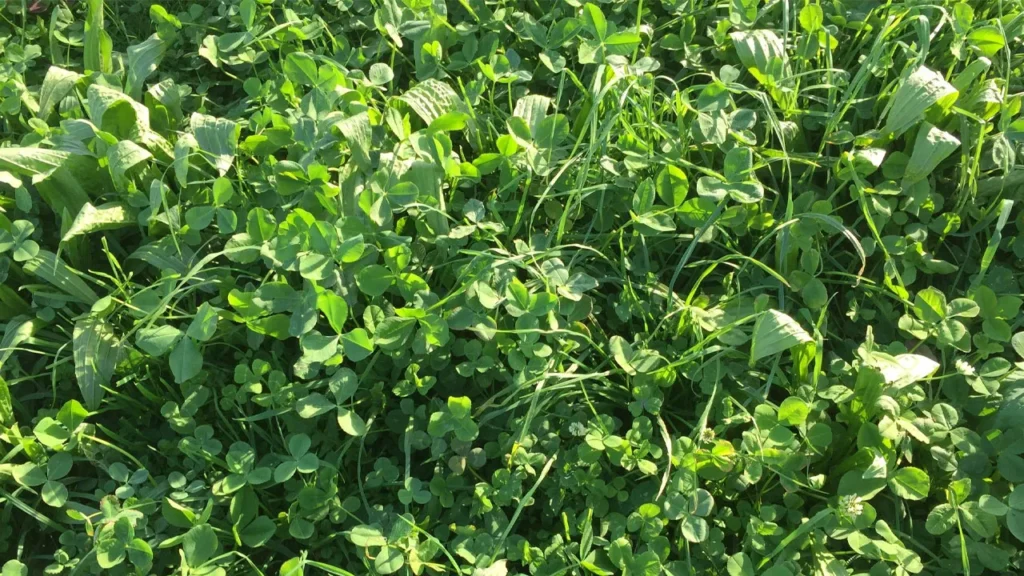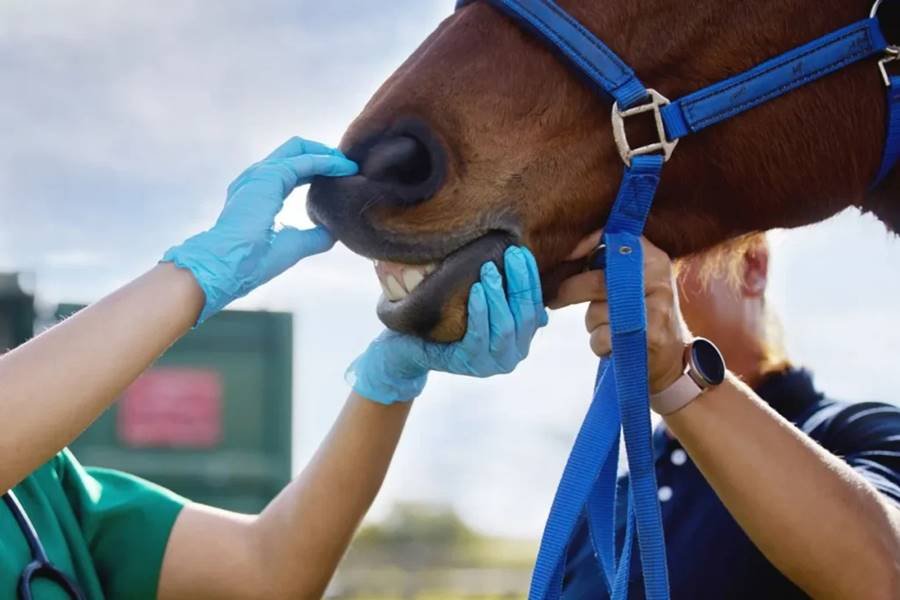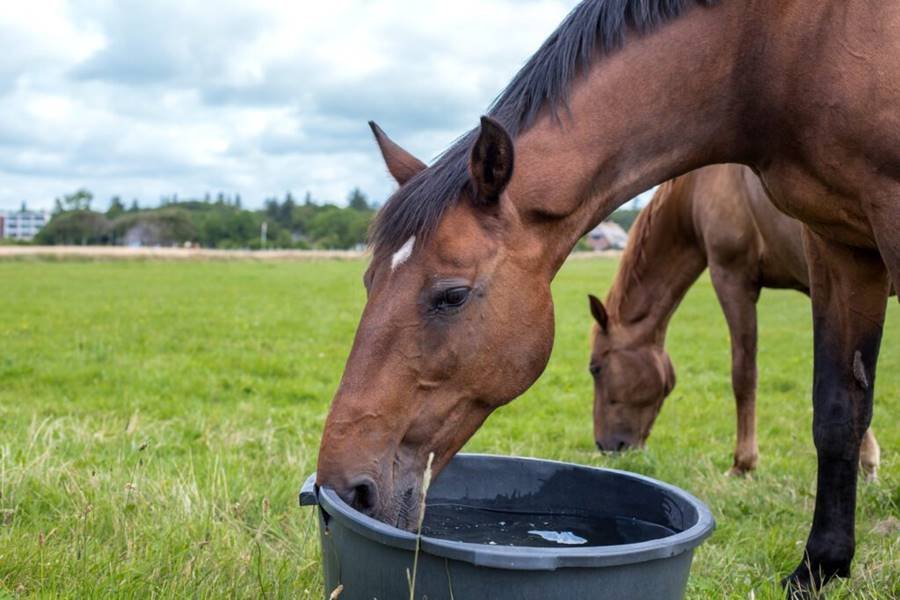Horses require a balanced diet to maintain their health, and the type of feed given plays a crucial role in their overall well-being.
The choice of feed for a horse largely depends on its age, workload, health status, and activity level. Below are some of the most common types of feed fed to horses:
1. Hay

Hay is a primary food source for most horses and provides essential fiber that helps with digestion. It comes in several types, each with different nutritional properties:
- Timothy Hay: A popular choice for adult horses, especially those not in heavy work. It is available in three main varieties: 1st cut (higher in fiber), 2nd cut (leafier and softer, lower in fiber), and 3rd cut (even softer, with the least fiber and the highest sugar content).
- Alfalfa Hay: Often fed to young, growing horses or those in heavy work because it’s high in protein and energy. It can be too rich for older, sedentary horses or those prone to weight gain or laminitis.
- Meadow Hay: Comes from grass fields and typically contains a variety of grasses and plants. It’s generally good for all horses, though the quality can vary depending on the specific grasses and when it was harvested.
- Orchard Grass Hay: A softer, sweeter-smelling grass hay that is often favored by horses with respiratory issues or picky eaters.
Horses should be provided with hay free-choice, meaning they should have access to hay at all times to allow them to eat as much as they need to maintain healthy digestive function.
2. Grain (Concentrates)
Grain or concentrates are typically fed to horses in addition to hay to meet their energy requirements, especially if they have higher energy needs due to work, growth, or pregnancy. Common grains fed to horses include:
- Oats: One of the most common grains fed to horses. Oats are high in fiber and low in starch, making them a good choice for most horses. They are easily digested and provide moderate energy.
- Barley: A good alternative to oats, barley is a bit more energy-dense and may be fed to horses in training or those needing additional calories.
- Corn: While energy-dense, corn is higher in starch and should be fed with caution. It’s usually mixed with other grains or added to feed blends for horses with higher energy demands.
- Wheat: Less commonly fed to horses but sometimes included in feed mixtures. It’s typically higher in starch and should be given in moderation.
Grain should always be fed in combination with hay to ensure the horse is getting the right balance of fiber and nutrition.
3. Commercial Pelleted or Cubed Feeds
Pelleted or cubed feeds are often used as a more convenient and nutritionally balanced option compared to mixing grains. These feeds are processed into pellet form, which makes them easy to store and serve. Some commercial feeds include:
- Complete Feed: Designed to be fed as the sole food source, these feeds are nutritionally balanced and often include both fiber and nutrients like vitamins and minerals. They are especially useful for horses with dental problems or those unable to consume large amounts of hay.
- Senior Feed: Specially formulated for older horses, these feeds tend to have higher fiber, softer textures, and added nutrients to support digestion and joint health.
- Performance or Work Feed: These are higher-energy feeds, often containing more calories, protein, and fat to support horses in heavy training or work.
These pelleted feeds are often fortified with vitamins, minerals, and other additives to ensure your horse receives a balanced diet.
4. Sweet Feed (Mixed Grains with Molasses)
Sweet feed is a mixture of grains (typically oats, corn, and barley) combined with molasses to make the feed more palatable. The sugar content in sweet feed is high, which provides quick energy, but it should be fed with caution due to its high sugar content. Sweet feed is commonly given to horses in work, but it can contribute to weight gain and digestive issues if not fed in moderation.
5. Grass or Legume Silage

Silage is fermented fodder that can be used to supplement hay, particularly during the colder months when fresh grass is unavailable. Silage made from grasses or legumes like clover or alfalfa provides a source of both fiber and nutrition. However, its fermentation process means it should be introduced gradually to prevent digestive upset.
6. Supplements and Additives
Many horses also require specific dietary supplements to address individual health needs. Common types of horse supplements include:
- Mineral Blocks or Salt Licks: These help provide essential minerals and salt that may be missing from the horse’s regular diet, especially for horses in hot climates that lose salt through sweating.
- Vitamins: Supplementing vitamins like A, D, and E can be necessary for horses that do not get enough from their regular feed, particularly those on hay-only diets.
- Joint Supplements: Horses in heavy training or those with joint issues may benefit from glucosamine, chondroitin, or other joint-supporting nutrients.
- Probiotics: To help maintain healthy gut flora, some horses may be given probiotics or digestive aids, particularly after an illness or antibiotic treatment.
7. Fruits and Vegetables

Horses can also enjoy a variety of fruits and vegetables as treats, such as apples, carrots, bananas, and pumpkin. These should be given in moderation and as a supplement to their main feed. Be sure to avoid feeding horses too many sugary treats, which can lead to digestive issues or obesity.
8. Haylage
Haylage is similar to silage but made from grass that is harvested at an earlier stage and wrapped in plastic to preserve its moisture content. It’s a good alternative to hay during wet conditions and provides horses with a high-fiber, nutrient-rich feed. It’s particularly beneficial for horses with respiratory issues as it’s usually less dusty than dry hay.




